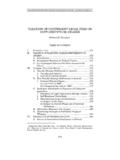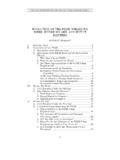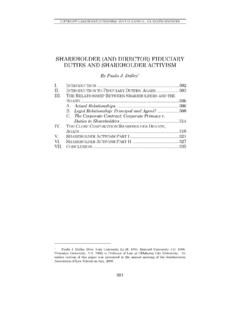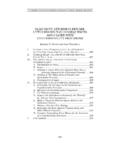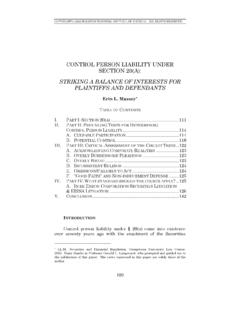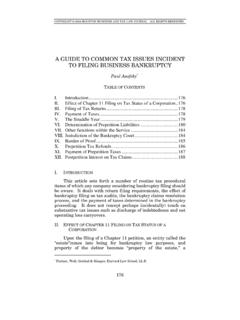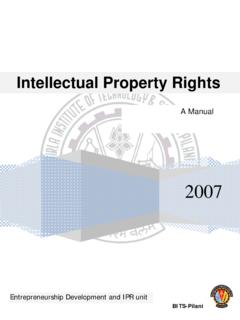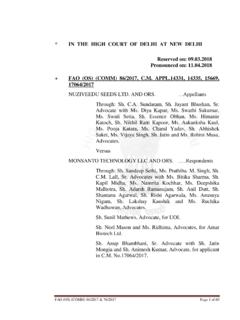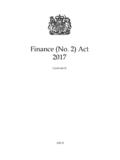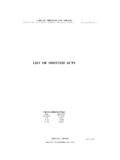Transcription of INTERNATIONAL TAXATION: APPLICATION OF SOURCE …
1 COPYRIGHT 2005 HOUSTON BUSINESS AND TAX LAW JOURNAL. ALL RIGHTS RESERVED. 205 INTERNATIONAL taxation : APPLICATION OF SOURCE RULES TO INCOME FROM INTANGIBLE PROPERTY Erin. L. Guruli* I. II. CURRENT TAXING III. CHARACTERIZATION OF TRANSACTIONS AND APPLICATION OF SOURCE RULES TO INCOME FROM INTANGIBLE A. B. Sales for Fixed or Contingent C. Manufacture and Sale of Goods Using Intellectual D. E. Space and Ocean IV. EXAMINATION OF PROPOSED V. I. INTRODUCTION Income derived from the use of intangible property1 has significantly increased over time with the evolution of technology and the growing number of commercial transactions between multinational enterprises. Use of intellectual property spans the continuum of income-generating activities, ranging from technical, scientific research to the creative expression of artistic * Ms.
2 Guruli received her from Loyola University School of Law, New Orleans, and her Master of Laws in taxation from Georgetown University Law Center. She would like to thank Professors Mary C. Bennett and Peter M. Daub for their comments. 1. For purposes of applying the sourcing provisions of the Internal Revenue Code, intangible property is defined as patents, copyrights, secret processes and formulas, good will, trade-marks, trade brands, franchises, and other like property. 861(a)(4) and 862(a)(4) (2000). Unless otherwise specified, all references herein are to the Internal Revenue Code of 1986, as amended, and the regulations thereunder. COPYRIGHT 2005 HOUSTON BUSINESS AND TAX LAW JOURNAL. ALL RIGHTS RESERVED. 206 HOUSTON BUSINESS AND TAX LAW JOURNAL [Vol. V concepts. 2 The imposition of taxes on certain income earned by foreign entities and the allowance of foreign tax credits to domestic entities requires identification of the geographic origin of In the realm of transactions involving intellectual property, identifying geographic origins of income pose[s] particularly difficult conceptual issues.]
3 4 This is primarily due to the problems associated with characterization and sourcing of income derived from intangible assets, as opposed to sourcing income generated from economic transactions involving tangible Therefore, expanding the use of intellectual property in cross-border transactions has invariably complicated the tax regime. Intangible assets such as patents, copyrights, trade brands, and computer software are gaining in importance relative to tangible assets by generating higher rates of return in an economy that emphasizes innovation because intangible assets have much greater INTERNATIONAL mobility. 6 The high-mobility aspect of intangible property creates the potential for entities to seek preferential tax jurisdictions. Specifically, because intangible assets are less dependent on any particular geographic location, utilization of high income-generating intangible assets in low tax jurisdictions ultimately results in increased tax savings and thus, increased revenues to the owner of the For example, in the 1976 Tax Reform Act, the Puerto Rico and Possession Tax Credit8 (PRPTC) was introduced by Congress to allow corporations to maintain the ability to receive credits for taxes paid on income generated in Puerto Rico and other In accordance with its provisions, corporations had the ability to elect to be wholly exempt from taxation on profits earned in Puerto Rico and possessions, 2.
4 PHILIP F. POSTLEWAITE et al, FEDERAL INCOME taxation OF INTELLECTUAL PROPERTIES & INTANGIBLE ASSETS [1] (2004). 3. See generally Lawrence Lokken, The Sources of Income from INTERNATIONAL Uses and Dispositions of Intellectual Property, 36 TAX L. REV. 235 (1981). 4. POSTLEWAITE, supra note 2, at [1] (citing Lawrence Lokken, The Sources of Income from INTERNATIONAL Uses and Dispositions of Intellectual Property, 36 TAX L. REV. 235 (1981)). 5. POSTLEWAITE, supra note 2, at [1]. 6. Arthur J. Cockfield, Designing Tax Policy for the Digital Biosphere: How the Internet is Changing Tax Laws, 34 CONN. L. REV. 333, 382 (2002). 7. Tom Neubig & Satya Poddar, Blurred Tax Boundaries: The New Economy s Implications for Tax Policy, 21 TAX NOTES INT L 1203, 1207 (2000). 8. 936 (1994). 9. Deborah S. DiPiero, Note, Puerto Rico s Need for Corporate Incentives Following the 1996 Amendment to Section 936, 15 INT L 549, 549-50 (1997).
5 COPYRIGHT 2005 HOUSTON BUSINESS AND TAX LAW JOURNAL. ALL RIGHTS RESERVED. 2005] DESKTOP PUBLISHING EXAMPLE 207 the purpose of which was to stimulate the economies10 in these Accordingly, high-profit, capital intensive industries were provided with an incentive to set up operations in Puerto Companies used this seemingly favorable incentive to open branch offices in Puerto Rico and other possessions which, in turn, reduced their income tax Specifically, throughout the 1960 s, 1970 s and 1980 s, pharmaceutical companies took advantage of the PRPTC by increasing the use of high income-generating intangibles (namely, patents14) in Puerto Rico in connection with their manufacturing The innate nature of intangible property to provide tax incentives, however, is not unlimited. Once the PRPTC became a scheme used by corporations to generate completely tax-free income from the use of intangible property, Section 936 was Currently, companies that had previously elected under Section 936 to be exempt from tax on income derived from intangible property in Puerto Rico or other possessions are no longer able to benefit from this As such, income from intangible property must be included in the computation of SOURCE Although such limitations have been imposed to curtail the evasion of tax liability on income derived from intangible property, too many incentives continue to exist that allow companies to transfer intangible property to low tax jurisdictions.
6 Congress pointed out 10. See id. at 550. 11. 936(a)(1)(A) (1994). 12. Symposium, Poverty Law and Policy: Standing Rusty and Rolling Empty: Law, Poverty, and America s Eroding Industrial Base, 81 GEO. L. J. 1757, 1777 (1993). 13. See id. 14. A patent is defined as a grant by the government to an inventor or discoverer which allows sole use, manufacture, or sale of a new product or method. The government grants exclusive ownership rights to an inventor to encourage public disclosure of inventions so the general population can benefit from them. MODERN DICTIONARY FOR THE LEGAL PROFESSION (3rd ed. 2001). Two specific types of patents include design patents, which are issued for a new, original, or ornamental design of a manufactured article. The patent protects the design for seventeen years and excludes others from making or selling articles of the same design during this time, and utility patents, which protect a new, useful, and nonobvious machine, process, or manufactured item.
7 A utility patent is often granted in conjunction with other forms of protection for the invention or item such as a trademark or copyright. Id. 15. See Symposium, supra note 12 at 1777 16. The Small Business Job Protection Act implemented a 10-year-phase-out period for corporations that previously elected under 936. Therefore, by the year 2006, no tax incentives will be available under 936 for corporations operating in Puerto Rico or other possessions. DiPiero, supra note 9, at 552-53. 17. Id. 18. 936(h)(1)(A) (1996). COPYRIGHT 2005 HOUSTON BUSINESS AND TAX LAW JOURNAL. ALL RIGHTS RESERVED. 208 HOUSTON BUSINESS AND TAX LAW JOURNAL [Vol. V in the Tax Reform Act of 198619 that such an incentive exists particularly when the intangible has a high value relative to manufacturing or assembly Such transfers can result in indefinite tax deferral or effective tax exemption on the earnings, while retaining the value in the related group.]
8 21 In addition to potential tax benefits that stem from the mobile nature of intangible property, in the context of e-commerce transactions and other transfers of digitized information, creative INTERNATIONAL tax planners have the ability to structure certain activities in such a way that will effectively alter the characterization of the transaction. For example, if a transaction involves a license of intellectual property by a foreign entity, it will be subject to the withholding However, by altering the characterization of the transaction, classifying the same transaction as a sale as opposed to a license, the foreign entity will completely avoid As these problems indicate, characterization and sourcing rules do not reflect the realities of the effects of intangible property on modern day business transactions. The purpose of this article is to examine the APPLICATION of SOURCE rules to income derived from intangible property, and to consider some of the problems associated with the current taxing regime.
9 Part II presents a brief overview of the current taxing regime including the withholding tax and the foreign tax credit mechanism. Part III examines in detail some of the difficulties associated with the characterization and sourcing of income derived from intangible property, and considers a number of inconsistencies in the APPLICATION of the rules. Part IV undertakes a discussion of some of the proposed modifications to the current sourcing rules. Finally, Part V suggests that although INTERNATIONAL tax scholars have advocated for a simplified taxing regime, which would include applying the place of use SOURCE rule to all types of transactions, whether characterized as a sale, license, or other transfer, this mechanism could result in unintended tax consequences for and foreign 19. Tax Reform Act of 1986, Pub. L. No.
10 99-514 (1986). 20. Paul Dau & Rod Donnelly, Globalization of Intangibles-Based Business: Tax Aspects, 9 STAN. BUS. & FIN. 1, 24 (2003) (citing Pub. L. No. 99-514). 21. Id. 22. David S. Teske & Tia Arzu, Considerations in INTERNATIONAL Intellectual Property Licensing, 20 No. 8 COMPUTER & INTERNET LAW 10, 13 (2003). 23. Id. COPYRIGHT 2005 HOUSTON BUSINESS AND TAX LAW JOURNAL. ALL RIGHTS RESERVED. 2005] DESKTOP PUBLISHING EXAMPLE 209 taxpayers. II. CURRENT TAXING REGIME Under the general SOURCE rules, income is categorized as income from sources within the ,24 income from sources outside the ,25 or income from mixed Making a determination as to whether income is from sources within the or outside the is significant for the APPLICATION of certain federal income tax provisions to citizens, resident aliens, domestic corporations, nonresident aliens, and foreign While citizens, resident aliens, and domestic corporations are taxed on their worldwide income,28 nonresident aliens and foreign corporations are generally taxed only on SOURCE The distinction between SOURCE income and foreign SOURCE income is of critical importance to both sets of taxpayers.

